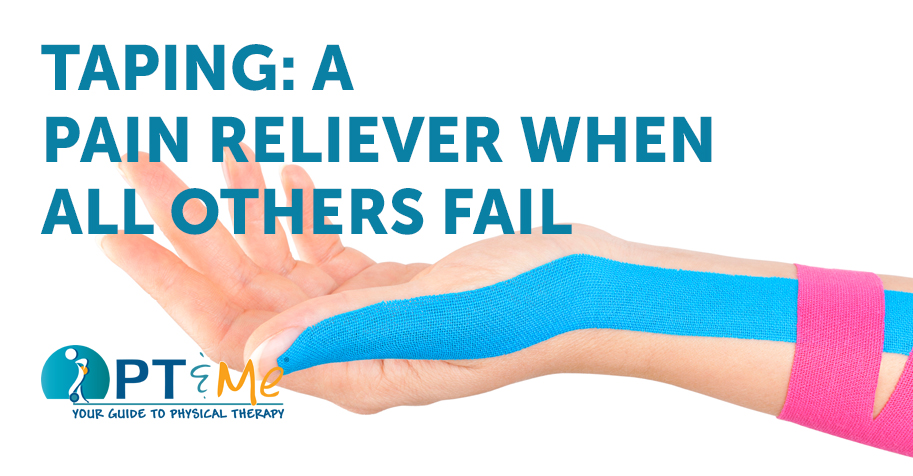
“It’s gone” and “I can’t believe a little piece of tape can help that much”. These are typical comments made by patients after they have been shown how to tape their joints. Hand therapists have expanded the tricks in their bag of treatment options for pain reduction methods. Kinesio taping is now used as an effective pain reliever for hands. Patients who have not found traditional splints comfortable or effective now have an alternative. They report significant improvements in hand function with the use of simple taping techniques due to reduced pain.
- HOW IT WORKS: Traditional splints have a history of mixed results. Hard or soft neoprene devices were used but patients often complained they were bulky, uncomfortable, and caused additional pain. Today’s therapists have borrowed taping techniques used by athletic trainers. These methods often decrease pain, provide external support for healing tissues, help reduce edema, and are less cumbersome than splints.
- TAPE TYPES: Various types of tape may be used depending on the type of support needed and the patient’s tolerance of adhesives. Examples include McConnell and Kinesio tapes. Proper tape and adhesive, as well as wrapping styles, will maximize results.
- EFFECTIVE TREATMENT AREAS: Typical pain-reducing taping areas include many of the typical painful hot spots in the hand such as the CMC joint, thumb, ulnar-sided wrist pain as well as joint ligament pain.
- KINESIO TAPING ADVANTAGES: Taping is a low-profile alternative to traditional splinting. It provides custom relief to the area needing support. It is cost-effective in that a splint need not be purchased. It is easier for the patient and may result in better treatment compliance.
If you are a patient with hand or wrist pain talk to your physical or occupational therapist about taping as a low-cost practical method of pain relief. Information provided by our friends at Plymouth Physical Therapy Specialists
More PTandMe articles about Kinesio Taping can be found here:


